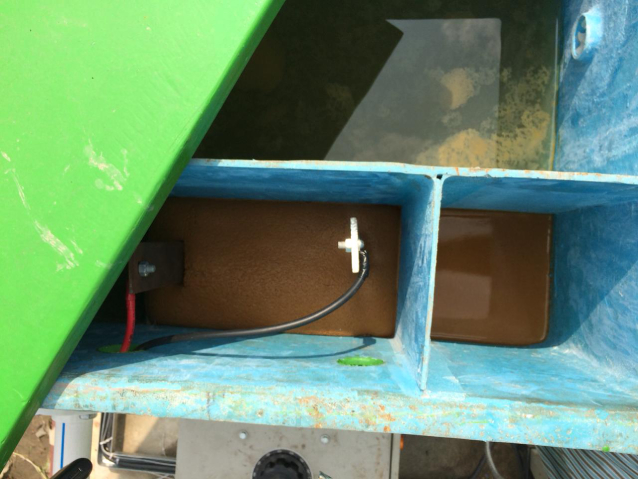
Electrocoagulation-electro flotation (ECF) technology is a treatment process of applying electrical current to treat and flocculate contaminants without having to add coagulations. Hitech Enviro Solutions stated that coagulation occurs with the current being applied, capable of removing small particles since direct current applied, setting them into motion. Also electrocoagulation could reduce residue for waste production Electrocoagulation consists of pairs of metal sheets called electrodes, that are arranged in pairs of two—anodes and cathodes. Using the principles of electrochemistry, the cathode is oxidized (loses electrons), while the water is reduced (gains electrons), thereby making the wastewater better treated. When the cathode electrode makes contact with the wastewater, the metal is emitted into the apparatus.
When this happens, the particulates are neutralized by the formation of hydroxide complexes for the purpose of forming agglomerates. These agglomerates begin to form at the bottom of the tank and can be siphon out through filtration. However, when one considers an electrocoagulation-flotation apparatus, the particulates would instead float to the top of the tank by means of formed hydrogen bubbles that are created from the anode. The floated particulates can be skimmed from the top of the tank. To consider how effective the ECF reactor can be, one must consider the following inputs or variables—wastewater type, pH, current density, type of metal electrodes (aluminum, steel, iron), number of electrodes, size of electrodes, and configuration of metals. These variables would affect the overall treatment time, kinetics, and also the removal efficiency measured. Electrocoagulation-flotation is an alternative method to classic chemical coagulation for many reasons. ECF is capable of reducing the need for chemicals due to the fact that the electrodes provide the coagulant. However, many individuals still use chemical coagulants to attempt to enhance treatment. Traditionally, chemical coagulation involves the use of alum (aluminum sulfate), ferric chloride (FeCl3), or ferrous sulfate (Fe2SO4) which can be very expensive depending on the volume of water treated. When applying the coagulant, the coagulant performs a similar function as the electrodes, neutralizing the charge of the particulates, thereby allow them to agglomerate and settle at the bottom of the tank. In addition, electrocoagulation-flotation is capable of reducing waste production from wastewater treatment and also reduces the time necessary for treatment.
Electrocoagulation – overview of the technology Coagulation is one of the important physic -chemical operations used in water treatment. This is a process used to cause the destabilization and subsequent aggregation of smaller particles into larger complexes. Water contaminants such as ions (heavy metals) and colloids (organic and inorganic) are primarily held in solution by electrical charges. Colloidal systems could be destabilized by the addition of ions of the charge opposite to that of the colloid. The destabilized colloids can then aggregate and subsequently be separated from the wastewater. Coagulation can be achieved by both the chemical or electrical means. Chemical coagulation has been used for decades to destabilize suspensions and to effect precipitation of soluble species and other pollutants from aqueous streams. Alum, lime and polymers are some of the chemical coagulants used. These processes, however, tend to generate large volumes of sludge with high bound water content which can be difficult to separate and dewater. The processes also tend to increase the total dissolved solids content of the effluent, making it unacceptable for reuse within industrial applications. Other aspects of chemical coagulation are also becoming increasingly less acceptable. The disposal cost of the large volumes of sludge (generally of fairly high hazardous waste category), the cost of the chemicals required to achieve coagulation and the environmental issues associated with the process are critical problems in many industries. Electrocoagulation, the passing of the electrical current through water, has proven very effective in the removal of contaminants from water. Electrocoagulation systems have been in existence for many years using a variety of anode and cathode geometries, such as plates, balls, fluidized bed spheres, wire mesh, rods, and tubes. Although the electrocoagulation mechanism resembles the chemical coagulation - the cationic species being responsible for the neutralization of surface charges – in many ways it is very different. Electrocoagulation is a process of destabilizing suspended, emulsified or dissolved contaminants in an aqueous medium by introducing electrical current into the medium. The electrical current provides the electromotive force causing the chemical reactions. Several distinct electrochemical processes occur during the electrocoagulation process independently.
| Parameter | Electrocoagulation | Chemical Coagulation |
|---|---|---|
| TSS | 95 to 99% | 80 to 90% |
| BOD | 50 to 98% | 50 to 80% |
| Bacteria | 95 to 99.99% | 80 to 90% |
The original – smaller – electrocoagulation chamber, which was used during the first year of the experiments, only had 6 electrodes. The current version of the reactor has 18 electrodes. all the electrodes are connected to the power source, the number and the configuration of the connected electrodes varies depending on the conductivity of the material processed. In the gaps between the connected electrodes unconnected electrodes are present, still functional in the flow of current, but not introducing the current into the chamber.
The electrodes connected to the power supply are positioned in a symmetrical way, with the gaps between them as equal as possible and with the number of anodes and cathodes identical if possible.